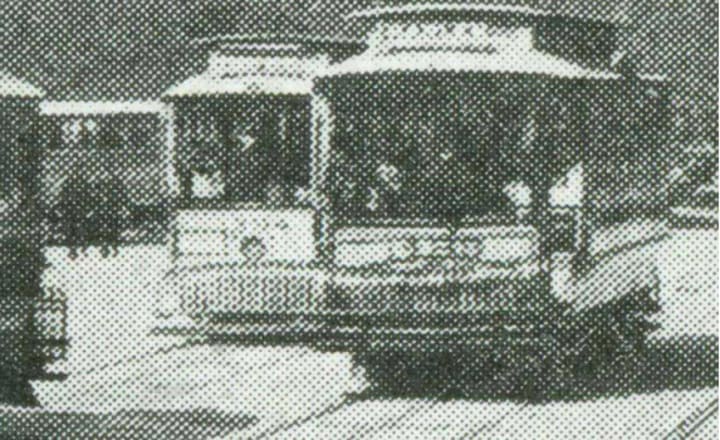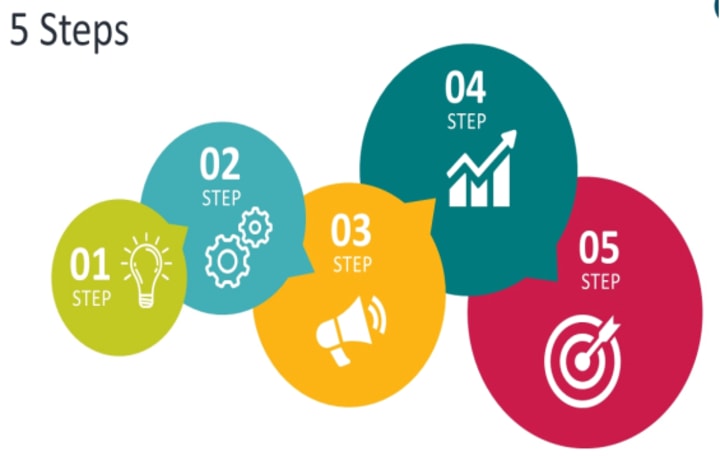
The creative process is a universal model that applies to nearly all brilliant concepts. This article aims to elucidate this process and highlight its significance, as creative thinking is a highly valuable skill. Innovative solutions, lateral thinking, and creative ideas can enhance your ability to navigate challenges both professionally and personally.
By implementing these five steps, anyone can cultivate their creativity. It is important to note, however, that being creative is not effortless. It necessitates bravery and extensive practice to tap into your creative genius. Nonetheless, this five-step approach serves to demystify the creative process and guide you towards more innovative thinking. To illustrate the functioning of this process, allow me to present a brief anecdote.
A Challenge Requiring an Innovative Resolution

Newspapers and printers encountered a specific and costly issue in the 1870s. During that time, photography emerged as a new and captivating medium, prompting readers' desire for more visual content. However, there was a significant challenge: finding a fast and economical way to print images.
To illustrate this dilemma, consider the process newspapers had to go through to print images in the 1870s. They had to hire engravers to manually etch copies of photographs onto steel plates. These plates were then used to press the images onto the pages. Unfortunately, these plates often broke after only a few uses, making the process of photoengraving incredibly time-consuming and expensive.
Frederic Eugene Ives, the inventor who devised a solution to this problem, became a pioneer in the photography field and held over 70 patents by the end of his career. His story of creativity and innovation serves as a valuable case study for understanding the five key steps of the creative process.
A Moment of Revelation
Ives began his career as an apprentice to a printer in Ithaca, New York. Following two years of gaining knowledge of the intricacies of the printing process, he took on the responsibility of overseeing the photographic laboratory at Cornell University, which was located nearby. Throughout the remainder of the decade, he dedicated his time to exploring innovative photography methods and expanding his understanding of cameras, printers, and optics.
Ives experienced a moment of revelation in 1881 concerning an improved method of printing.
“When I was using the photographic modeling process in Ithaca, I studied the problem of the halftone process,” Ives explains. “One night, I went to sleep in a state of brain fog from the problem, and as soon as I woke up in the morning, I saw before my eyes, seemingly projected onto the ceiling, the procedure and equipment were fully functional. normal movement."
Ives quickly turned his vision into reality and patented his printing method in 1881. He spent the rest of the decade improving it. By 1885, he had developed a simplified process that yielded even better results. The Ives process, as it became known, reduced the cost of printing images by a factor of 15 and remained the standard printing technique for the next 80 years.
Okay, presently let's talk about what lessons able to learn from Ives around imaginative preparation.

The 5 Stages of the Inventive Prepare
In 1940, an promoting official named James Webb Youthful distributed a brief direct titled, A Strategy for Creating Thoughts. In this direct, he made a basic, but significant articulation approximately creating inventive thoughts.
Agreeing to Youthful, inventive thoughts happen after you create unused combinations of ancient components. In other words, imaginative considering isn't almost producing something modern from a clear slate, but or maybe approximately taking what is as of now show and combining those bits and pieces in a way that has not been done already
Most imperative, the capacity to produce unused combinations pivots upon your capacity to see the connections between concepts. In case you'll be able frame a new link between two ancient thoughts, you've got done something imaginative.
Youthful accepted this prepare of inventive association continuously happened in five steps.

1. Accumulate unused fabric: To begin with, you learn. Amid this organize you center on
A) learning a particular fabric specifically related to your assignment
B) learning common fabric by getting to be interested in a wide run of concepts.
2. Altogether work over the materials in your intellect: Amid this arrangement, you look at what you have learned by looking at the actualities from distinctive points and testing by fitting different thoughts together.
3. Step absent from the issue: Following, you put the issue totally out of your intellect and go do something else that energizes you and energizes you.
4. Let your thought return to you: At a few points, but as it were after you have got halted considering almost it, your thoughts will come back to you with a streak of understanding and recharged vitality.
5. Shape and create your thoughts based on input: For any thought to succeed, you must discharge it out into the world, yield it to feedback, and adjust it as required.
The Thought in Hone
The inventive handle utilized by Frederic Eugene Ives offers a culmination case of these five steps in the activity.
To begin with, Ives accumulated modern fabric. He went through two a long time working as a printer's disciple and after that four a long time running the photographic research facility at Cornell College. These encounters gave him a part of the fabric to draw upon and make affiliations between photography and printing.
Moment, Ives started to rationally work over everything he learned. By 1878, Ives was investing all of his time in testing with modern methods. He was continually tinkering and testing with diverse ways of putting thoughts together.
Third, Ives ventured absent from the issue. In this case, he went to rest for a number of hours some time recently his streak of knowledge. Letting imaginative challenges sit for longer periods of time can work as well. Regardless of how long you step absent, you wish to do something that interface you and takes your intellect off of the issue.
Fourth, his thought returned to him. Ives stirred with the arrangement to his issue laid out some time recently him. (On a individual note, I regularly discover inventive thoughts hit me fair as I am lying down for rest. Once I allow my brain consent to halt working for the day, the arrangement shows up effectively.)

At last, Ives kept on change his thought for a long time. In truth, he improved so numerous perspectives of the method he recorded a moment obvious. This is often a basic point and is regularly neglected. It can be simple to drop in cherish with the starting form of your thought, but extraordinary thoughts continuously advance.
The Imaginative Handle in Brief
“A thought may be a deed of association, and the stature of it could be a great metaphor.”
—Robert Frost
The inventive handle is the act of making modern associations between ancient thoughts. In this way, we are able to say imaginative considering is the errand of recognizing connections between concepts.

One way to approach imaginative challenges is by following the five-step preparation of
1) gathering fabric
2) heightening working over the fabric in your intellect
3) venturing absent from the issue
4) permitting the thought to come back to you actually
5) testing your thought within the genuine world and altering it based on criticism.
Being imaginative isn't approximately being the primary (or as it were) individual to think of a thought. More regularly, imagination is around interfacing thoughts.
About the Creator
Forspiya
I am a master wordsmith skilled in creating inspiring articles. I have a distinct voice that blends professionalism and relatability, making complex topics accessible to all readers. My style captivates readers to read more.






Comments (1)
“Like what you read? Send me a gift below to help contribute to my next adventure!”